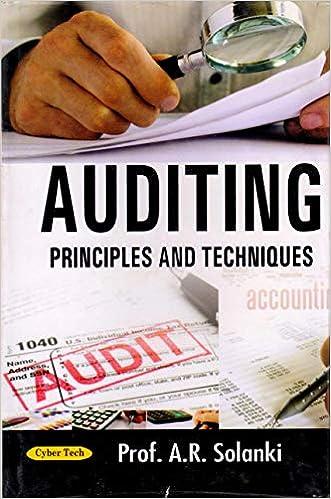Question
1. Product Pricing: Single Product Presented is the 2014 contribution income statement of Colgate Products. COLGATE PRODUCTS Contribution Income Statement For Year Ended December 31,
1. Product Pricing: Single Product Presented is the 2014 contribution income statement of Colgate Products.
| COLGATE PRODUCTS Contribution Income Statement For Year Ended December 31, 2014 | ||
|---|---|---|
| Sales (13,000 units) | $ 1,560,000 | |
| Less variable costs | ||
| Cost of goods sold | $ 520,000 | |
| Selling and administrative | 143,000 | (663,000) |
| Contribution margin | 897,000 | |
| Less fixed costs | ||
| Manufacturing overhead | 520,000 | |
| Selling and administrative | 210,000 | (730,000) |
| Net income | $ 167,000 | |
During the coming year, Colgate expects an increase in variable manufacturing costs of $8 per unit and in fixed manufacturing costs of $35,000. (a) If sales for 2015 remain at 13,000 units, what price should Colgate charge to obtain the same profit as last year? Round to the nearest cent.
(b) Management believes that sales can be increased to 16,000 units if the selling price is lowered to $107. What would be the excepted profit (or loss) as a result of this action? Use a negative sign with your answer, if appropriate. (c) After considering the expected increases in costs, what sales volume is needed to earn a profit of $167,000 with a unit selling price of $107? Round to the nearest unit.
2. Cost-Based Pricing and Markups with Variable Costs Compu Services provides computerized inventory consulting. The office and computer expenses are $600,000 annually and are not assigned to specific jobs. The consulting hours available for the year total 20,000, and the average consulting hour has $30 of variable costs. (a) If the company desires a profit of $160,000, what should it charge per hour? (b) What is the markup on variable costs if the desired profit is $240,000? (c) If the desired profit is $60,000, what is the markup on variable costs to cover (1) unassigned costs and (2) desired profit?
Markup to cover unassigned costs:
Markup to cover desired profits:
3. Computing Markups The predicted 2009 costs for Osaka Motors are as follows:
| Manufacturing Costs | Selling and Administrative Costs | ||
|---|---|---|---|
| Variable | $100,000 | Variable | $300,000 |
| Fixed | 230,000 | Fixed | 200,000 |
Average total assets for 2009 are predicted to be $8,000,000. (a) If management desires a 11 percent rate of return on total assets, what are the markup percentages for total variable costs and for total manufacturing costs? (Round your answers to the nearest whole percent.) Markup on variable costs: Markup on manufacturing costs:
(b) If the company desires a 8 percent rate of return on total assets, what is the markup percentage on total manufacturing costs for (1) unassigned costs and (2) desired profit? (Round your answers to the nearest whole percent.)
Markup to cover unassigned costs: Markup to cover desired profit:
4. Product Pricing: Two Products
Quality Data manufactures two products, CDs and DVDs, both on the same assembly lines and packaged 10 disks per pack. The predicted sales are 400,000 packs of CDs and 500,000 packs of DVDs. The predicted costs for the year 2009 are as follows:
| Variable Costs | Fixed Costs | |
|---|---|---|
| Materials | $200,000 | $500,000 |
| Other | 150,000 | 600,000 |
Each product uses 50 percent of the materials costs. Based on manufacturing time, 40 percent of the other costs are assigned to the CDs, and 60 percent of the other costs are assigned to the DVDs. The management of Quality Data desires an annual profit of $50,000. (a) What price should Quality Data charge for each disk pack if management believes the DVDs sell for 20 percent more than the CDs? Round answers to the nearest cent. CDs: DVDs:
(b) What is the total profit per product using the selling prices determined in part (a)? Use negative signs with answers, if appropriate.
CDs: DVDs:
5. Target Costing
Oregon Equipment Company wants to develop a new log-splitting machine for rural homeowners. Market research has determined that the company could sell 6,000 log-splitting machines per year at a retail price of $700 each. An independent catalog company would handle sales for an annual fee of $2,000 plus $50 per unit sold. The cost of the raw materials required to produce the log-splitting machines amounts to $80 per unit.
If company management desires a return equal to 10 percent of the final selling price, what is the target unit cost? Round answer to the nearest cent.
Step by Step Solution
There are 3 Steps involved in it
Step: 1

Get Instant Access to Expert-Tailored Solutions
See step-by-step solutions with expert insights and AI powered tools for academic success
Step: 2

Step: 3

Ace Your Homework with AI
Get the answers you need in no time with our AI-driven, step-by-step assistance
Get Started


